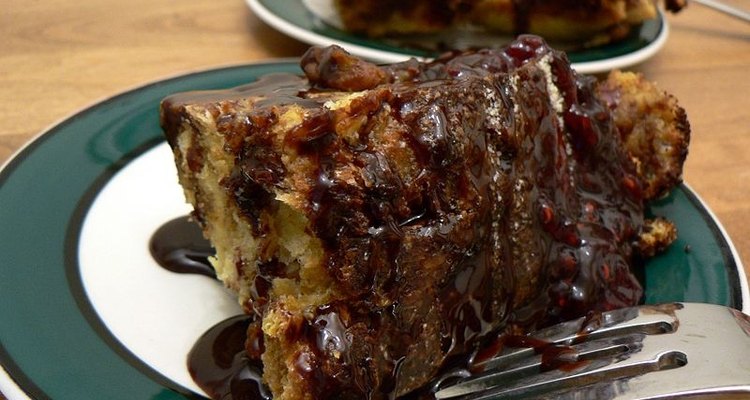
Bread pudding is a dish with very old roots. It evolved as a use for stale bread. Cooks from many cultures throughout history have been loathe to waste stale bread, so they invented many dishes, both savory and sweet, that utilized it. Today, bread pudding is still made, but its current forms tend to be far more luxurious than their humble origins. Modern bread puddings often utilize fresh, gourmet breads, such as brioche, and include expensive ingredients, such as vanilla beans, bourbon, gruyere cheese or pecans. Sweet bread puddings may also be served with a variety of sauces.
Features
Bread puddings start with bread crumbs, bread cubes or bread slices. The crumbs or cubes are then soaked in an egg custard mixture. In sweet bread puddings, this custard mixture may include eggs; milk or cream; sugar; and spices, such as vanilla, rosewater or cinnamon. For savory bread puddings, the bread may be soaked with eggs; milk, broth or cream; vegetables, meat or cheese; and a variety of herbs and spices. The components common to all bread pudding dishes are the eggs and the milk or cream---these are essential, as they form the custard base that holds bread puddings together. Cooks may add a large variety of ingredients to this base. Sweet bread puddings sometimes contain chocolate, nuts, candied citrus peel, dried fruits and other specialty ingredients, while savory bread puddings sometimes contain high-quality meats, cheeses, mushrooms and other lavish additions. Bread puddings are also usually enriched with butter or oil. Bread puddings are baked, sometimes in a dish placed in a pan of hot water, which helps ensure even cooking.
History
Bread puddings date back centuries. For the vast majority of human history, most people could not afford to waste food, so a number of uses for stale bread were invented. In addition to bread pudding, cooks also used stale bread to make stuffing, thickeners and edible serving containers. Although the Romans did use eggs as binding agents in various recipes, custard was not invented until the Middle Ages, so early bread puddings were probably made simply from milk, stale bread, fat and perhaps a sweetener. Bread puddings were not only made by the Romans. Ancient versions of bread pudding include Om Ali, an Egyptian dessert made from bread, milk or cream, raisins and almonds; Eish es Serny, a Middle Eastern dish made from dried bread, sugar, honey syrup, rosewater and caramel; and Shahi Tukra, an Indian dish made from bread, ghee, saffron, sugar, rosewater and almonds.
Bread puddings have remained popular throughout the ages. Today, bread puddings are not as common as they used to be, but they are still frequently consumed in the United Kingdom, the southern United States, Mexico, Argentina, Puerto Rico, Belgium and France.
Types
Bread puddings may be savory or sweet, served hot or cold, and simple or extremely complex. Bread pudding's simplicity lends itself to a number of different preparations, and countless variations on this recipe abound. Any type of bread may be used to make bread pudding, although white breads are more commonly used. French toast is a cousin of bread pudding.
Uses
In the 18th century, bread pudding gained a reputation as good food for sick people, probably because it was easy to digest. The primary use of bread pudding is to use up stale bread. Bread pudding is widely considered to be a "comfort food."
Sauces
Sweet bread puddings are often served with sweet sauces. Sauces used for this purpose include creme anglaise; caramel, whipped cream or liqueur-based sauces; and fruit, lemon, chocolate or vanilla-based sauces.
Related Articles
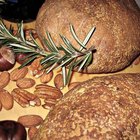
What Is Artisan Bread?

Staple Foods in Greek Culture

How to Make Communion Bread Wafers
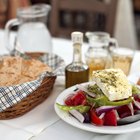
List of Greek Breads

Calories in Bread Pudding

A List of Foods From the Medieval Times

What Is the Difference Between Scones & ...

About Colonial Desserts

Can You Substitute Yogurt for Milk in ...

Facts About Italian Cuisine
What Is Rusk Bread?

Hopi Indian Foods
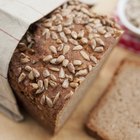
Russian Rye Bread vs. Pumpernickel
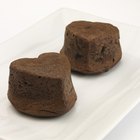
What Is a Souffle Dish?

How to Freeze Brioche

List of Cuban Foods

Whole Eggs Vs. Egg Yolks for Sweet Bread

Lumpia vs. Egg Rolls

What Kind of Bread Do I Serve With ...
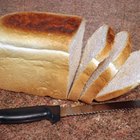
How to Bake Bread in the Oven
References
Resources
Writer Bio
Emily Maggrett has been writing for more than eight years. Her fiction has appeared in "Jeopardy" and "Rivet" and her journalism has appeared in "The Cascadia Weekly" and "The Western Front." Maggrett holds a Bachelor of Arts in English literature from Western Washington University.
Photo Credits
Stu Spivack: Wiki Commons.org